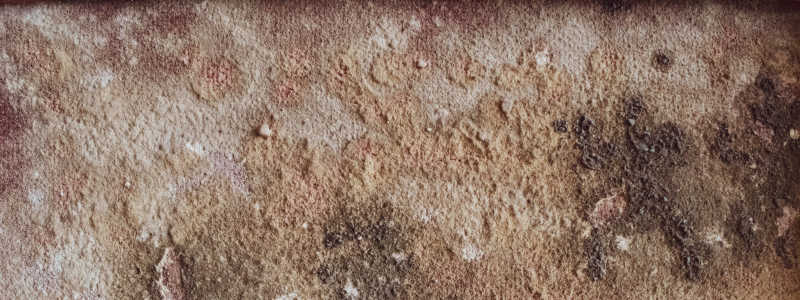
When my pilot colleagues and I were renting crash pads in various cities to live in during our reserve periods and days off between trips, we looked ahead to prevent the usual wear, tear, and damage which could cause problems with the landlords. When it was time to move out, the places were at least as good, if not better than when we moved in. Except for that time when there was an outbreak of mold after days of tropical rains... It nearly cost a whole security deposit with one jerk of a landlord, but I learned fast how to remove the mold and not have any more problems. I hope the words below will help you.
Mold is a Fungus - neither plant nor germ
We are generally familiar with plants, animals, sea creatures, and even germs. Molds are a different kind of living thing. They are a fungus - like the large fungus you see on dead wood in a forest, or mushrooms. All they need to live is some organic matter, oxygen, and water. Molds, unlike mushrooms, are quite small. They often have white or almost clear tendrils which reach into their food source, and a top with white, black, green, or pinkish spores. The spores are supposed to blow away in the air and contimue life in other dead, wet, organic matter. Molds are not good for us because they can make us sick - sometimes seriously ill.
You have probably seen moldy bread or other food. As an apartment or house renter, you should be concerned about the mold which thrves in wet and humid weather. Mold is also a serious problem if you have flooding or leaky pipes. A good landlord will take care of the walls, ceilings, and floors - replacing any areas which have collected mold after leaks or floods. Many landlords are not so helpful when there is mold in the closets, cabinets, in the refrigerator, or in the clothing you have packed in a storage room. They may even try to take money from you for interior mold clean-up if they can stick it to you.
Cleaning Moldy Cabinets and Closets
Most of the time, when the air is humid, mold will probably grow in your closets and cabinets. It may grow on clothing and on shelves in there. If you open the door and get a musty or chalky smell, there is mold! You can clean up the mold with these methods:
- Fill a spray bottle with white vinegar - the kind you find in the supermarket. Vinegar kills mold very effectively.
- Spray vinegar on moldy surfaces, and scrub with a moist spinge or cloth. Rinse the cloth frequently in a bucket of water.
- A mix of diluted bleach and water (2 tablespoons per liter) is also a good mold killer and general cleaner, but do not use it on fabrics or bare wood. Don't let a bleach and water mixture get on your clothing. Scrub away the mold, then rub the area down with a moist sponge or cloth.
- Remove, wash, then thoroughly dry any clothing which has been in a moldy place. Mold will ruin your clothing if you allow it to remain uncleaned.
- Moldy refrigerators can be cleaned as you would for a moldy cabinet.
- After cleaning, allow all aread to dry in the open air - or use a fan.
Preventing New Mold Growth
The key to preventing new mold growth is a three part strategy which makes it difficult for mold to get established. Also, plan to check for mold and clean it up whenever you find some. Here is what works to prevent future mold problems:
- Keep your closets and cabinets dry. Use a dehumidifier in you apartment if possible. For small spaces, you can get dehumidifier packets or bags. These contain a substance which draws water out of the air.
- Before hanging or packing away clothing, wash it and make sure it is completely dry. Damp clothing is a prime habitat for mold and a supply of moisture.
- If possible, open your closets and cabinets and expose them to light and fresh air. As often as you can, avoid letting them be "dark and damp."
- Check regularly for mold and do the vinegar or bleach wash / scrub wherever you find mold.
Mold in Walls, Ceilings, or Air Ducts
Mold infesting the structure or air ducts where you reside is a serious health hazard. Contact your landlord without delay and try to get the problem fixed. Often, the affected walls or ceiling will need heavy work. That can mean replacing drywall or wood. Of course, if it was due to a leaky pipe, that should be fixed first. Take pictures and write down notes about the whole situation from start to finish, just in case you have legal trouble or get billed unfairly afterward.
Last Words About Mold
Molds have existed far longer than people. Mold rides on the breeze and is everywhere. It does not have to ruin your dwelling, make you sick, or be a reason to pay extra money for a special cleaning. Remember to keep things dry, checked, and get the little grunge before it becomes a problem - and all will be okay.
© 2021 - 2025 Renterbuddy.org, All Rights Reserved.
Written and curated by Webmaster Philip C.
Contact, Privacy Policy and Affiliate Disclosure, XML Sitemap.
This website is reader-supported. As an Amazon affiliate, I earn from qualifying purchases.